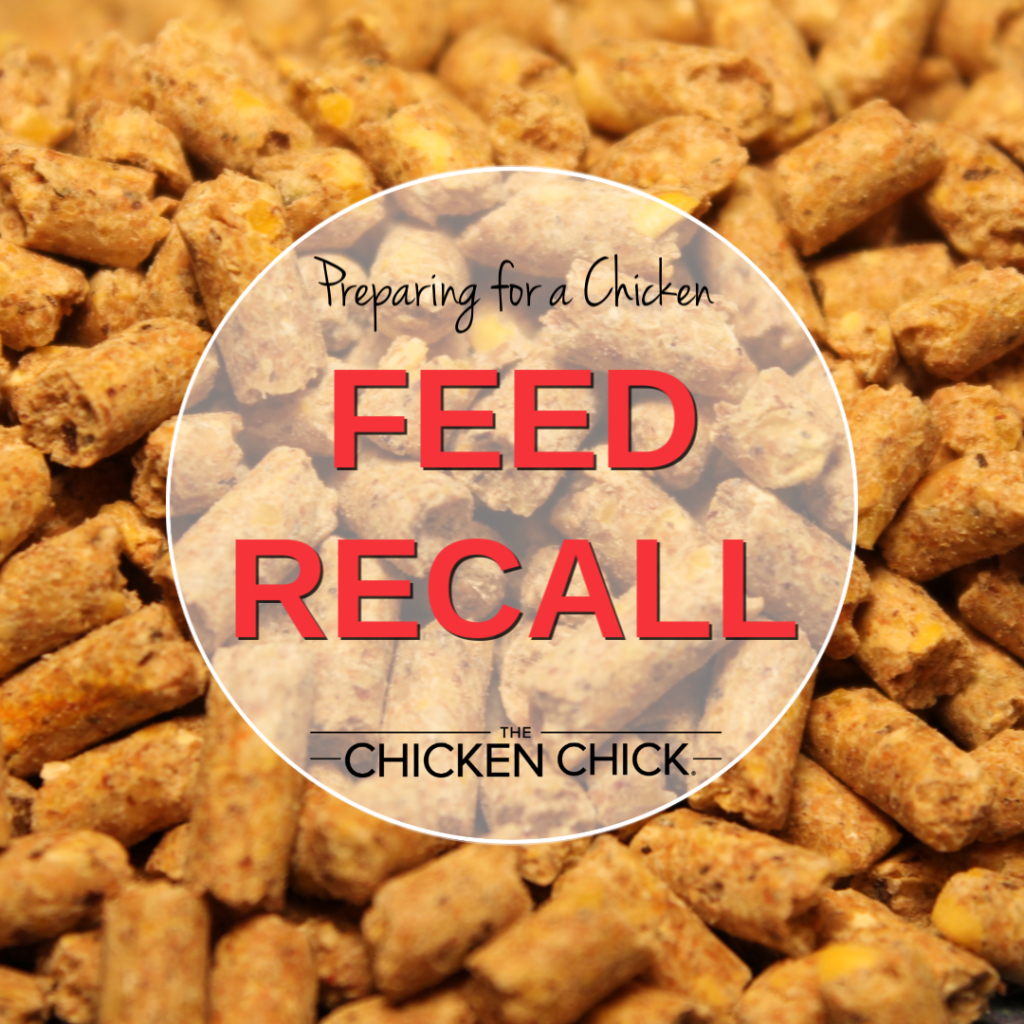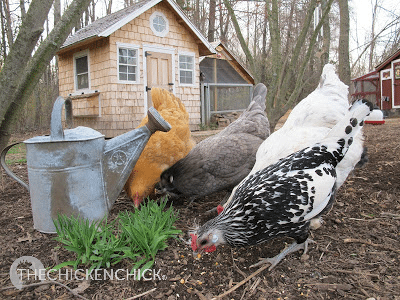The July 27, 2012 voluntary recall of certain lots of Purina brand chicken feeds is an important reminder that we need to know precisely what feed we are giving our chickens at all times. The recall was due the omission of Vitamin D in certain lots of Purina poultry feed.
Who was affected by the July 2012 recall?
Probably not you if your chickens live outdoors. Vitamin D is required for the absorption of calcium. Chickens naturally synthesize Vitamin D when exposed to sunlight and thirty minutes per day is adequate to satisfy their nutritional needs. Most backyard chickens are kept in the yard or run and have plenty of opportunity to soak in the sun each day, therefore the absence of Vitamin D in the feed is of no concern. However, chickens not exposed to sunlight regularly must receive supplemental Vitamin D, which makes this omission of concern for their health. A lack of Vitamin D over a period of weeks can cause soft beaks, claws, weak eggshells, leg problems, impaired hatchability of fertile eggs and slow growth in younger chickens. If chicks are being brooded in the basement or room without access to sunlight, this recall CAN affect their health. No need to throw away the feed, however, simply put them outside for a half an hour of daily playtime in the sun.
This lump of feed was found inside my feed bag recently. Since I had the bag tag in the feed bin, contacting the company to apprise them of this quality control problem will allow them to follow up on it. I did not use the remaining feed in case it was moldy and the company sent me a coupon for a replacement bag.
PREPARE FOR CHICKEN FEED RECALLS
Most of us bring home bags of feed, empty them out into storage containers and throw away the ingredient tag, but that is a mistake. The feed bag tag contains valuable information about the production date, facility and batch. When opening a new bag of chicken feed, save the tag that is sewn into the seam and toss it on top of the feed bin. While the July 2012 recall did not affect most backyard chickens, at some point a more serious recall might and being able to determine whether the feed in our pets’ dishes is safe to eat could be critical.(As a side note, feedbags have many terrific uses, don’t toss them out, repurpose them!)
Each bag of chicken feed has a tag sewn to it that lists the type of feed, nutrition information and the lot code for that particular feed. The lot code allows the feed to be tracked back to the manufacturer when problems arise. If your feed bag also has a date code stamped on the bottom of the sewn edge of the bag, save that too.
When I started hatching chicks, I got in the habit of tossing the tag on the top of the feed in its storage bin so I could distinguish medicated chick starter from starter/grower crumbles, which looked identical to me. When I got wind of the first chicken feed recall, I realized that keeping the lot tags with the feed was an important safety measure I hadn’t even considered and have done it with all feed, grain, scratch, sunflower seeds, etc. ever since.
I recommend cutting the tags off and tossing them on the top of the feed in its storage bin. When the bin is empty remove the old feed bag tags, refill the bin and toss in the new tags. This simple step ensures that we always know precisely what we are feeding our chickens and can help us safeguard them in the event of a critical recall.
Kathy Shea Mormino
Affectionately known internationally as The Chicken Chick®, Kathy Shea Mormino shares a fun-loving, informative style to raising backyard chickens. …Read on


shop my SPONSORS
The July 27, 2012 voluntary recall of certain lots of Purina brand chicken feeds is an important reminder that we need to know precisely what feed we are giving our chickens at all times. The recall was due the omission of Vitamin D in certain lots of Purina poultry feed.
Who was affected by the July 2012 recall?
Probably not you if your chickens live outdoors. Vitamin D is required for the absorption of calcium. Chickens naturally synthesize Vitamin D when exposed to sunlight and thirty minutes per day is adequate to satisfy their nutritional needs. Most backyard chickens are kept in the yard or run and have plenty of opportunity to soak in the sun each day, therefore the absence of Vitamin D in the feed is of no concern. However, chickens not exposed to sunlight regularly must receive supplemental Vitamin D, which makes this omission of concern for their health. A lack of Vitamin D over a period of weeks can cause soft beaks, claws, weak eggshells, leg problems, impaired hatchability of fertile eggs and slow growth in younger chickens. If chicks are being brooded in the basement or room without access to sunlight, this recall CAN affect their health. No need to throw away the feed, however, simply put them outside for a half an hour of daily playtime in the sun.
This lump of feed was found inside my feed bag recently. Since I had the bag tag in the feed bin, contacting the company to apprise them of this quality control problem will allow them to follow up on it. I did not use the remaining feed in case it was moldy and the company sent me a coupon for a replacement bag.
PREPARE FOR CHICKEN FEED RECALLS
Most of us bring home bags of feed, empty them out into storage containers and throw away the ingredient tag, but that is a mistake. The feed bag tag contains valuable information about the production date, facility and batch. When opening a new bag of chicken feed, save the tag that is sewn into the seam and toss it on top of the feed bin. While the July 2012 recall did not affect most backyard chickens, at some point a more serious recall might and being able to determine whether the feed in our pets’ dishes is safe to eat could be critical.(As a side note, feedbags have many terrific uses, don’t toss them out, repurpose them!)
Each bag of chicken feed has a tag sewn to it that lists the type of feed, nutrition information and the lot code for that particular feed. The lot code allows the feed to be tracked back to the manufacturer when problems arise. If your feed bag also has a date code stamped on the bottom of the sewn edge of the bag, save that too.
When I started hatching chicks, I got in the habit of tossing the tag on the top of the feed in its storage bin so I could distinguish medicated chick starter from starter/grower crumbles, which looked identical to me. When I got wind of the first chicken feed recall, I realized that keeping the lot tags with the feed was an important safety measure I hadn’t even considered and have done it with all feed, grain, scratch, sunflower seeds, etc. ever since.
I recommend cutting the tags off and tossing them on the top of the feed in its storage bin. When the bin is empty remove the old feed bag tags, refill the bin and toss in the new tags. This simple step ensures that we always know precisely what we are feeding our chickens and can help us safeguard them in the event of a critical recall.



































This should help you figure out what's going on, Wendy. It could be a combination of things. https://the-chicken-chick.com/2012/12/decrease-in-egg-production-causes.html
I'm wondering if my Chickens Diet is affecting their laying.. they have just about stopped laying totally.. at first I thought it was because of the shorter days, but still with 15 hens I'm not even getting one egg a day?….
Great advice!
Thanks for this very important information :)